
bartley
-
Posts
406 -
Joined
-
Last visited
Content Type
Profiles
Forums
Gallery
Events
Posts posted by bartley
-
-
-
Post 26: Chain Plates deadeyes etc
I made the backstay plates and the chainplates as described by Chuck. I am not sure what the correct procedure is for making the deadeye strops is but here's what I did:
I made some rings by wrapping 22 gauge wire around a 6.3 mm diameter dowel
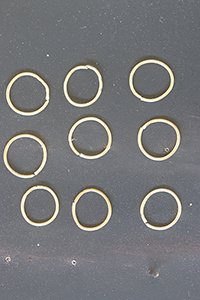
Then silver soldered them closed
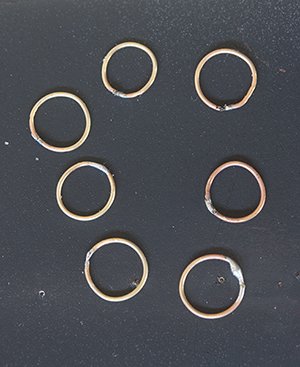
Blackened them
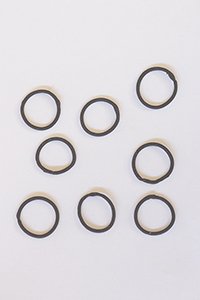
Then crimped them around the deadeye
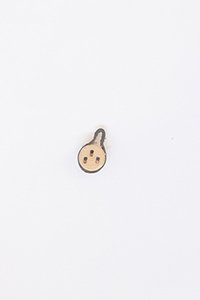
The plans show the chainplates nailed to the wales then to the hull then to the channel. I thought this involved an ugly kink so I put two nails in the wales and one in the channel.
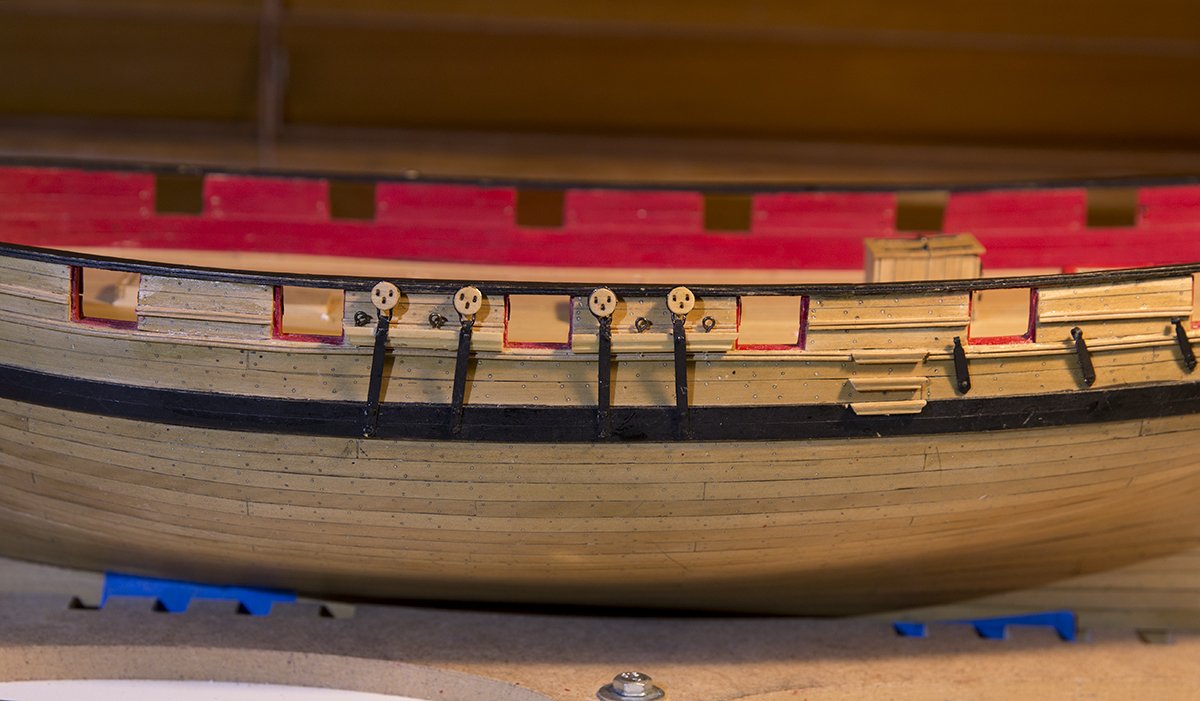
John
- mtaylor, MEDDO, Ryland Craze and 5 others
-
 8
8
-
My wife and I are keen opera fans and although there is no live opera at the moment, the Metropolitan Opera in New York is streaming a different opera every day including some performances from the 60's and 70's starring performers like Big Lucy Pavarotti and the legendary black American soprano Leontyne Price. The effect on my ship modelling can be seen in the attached photo!
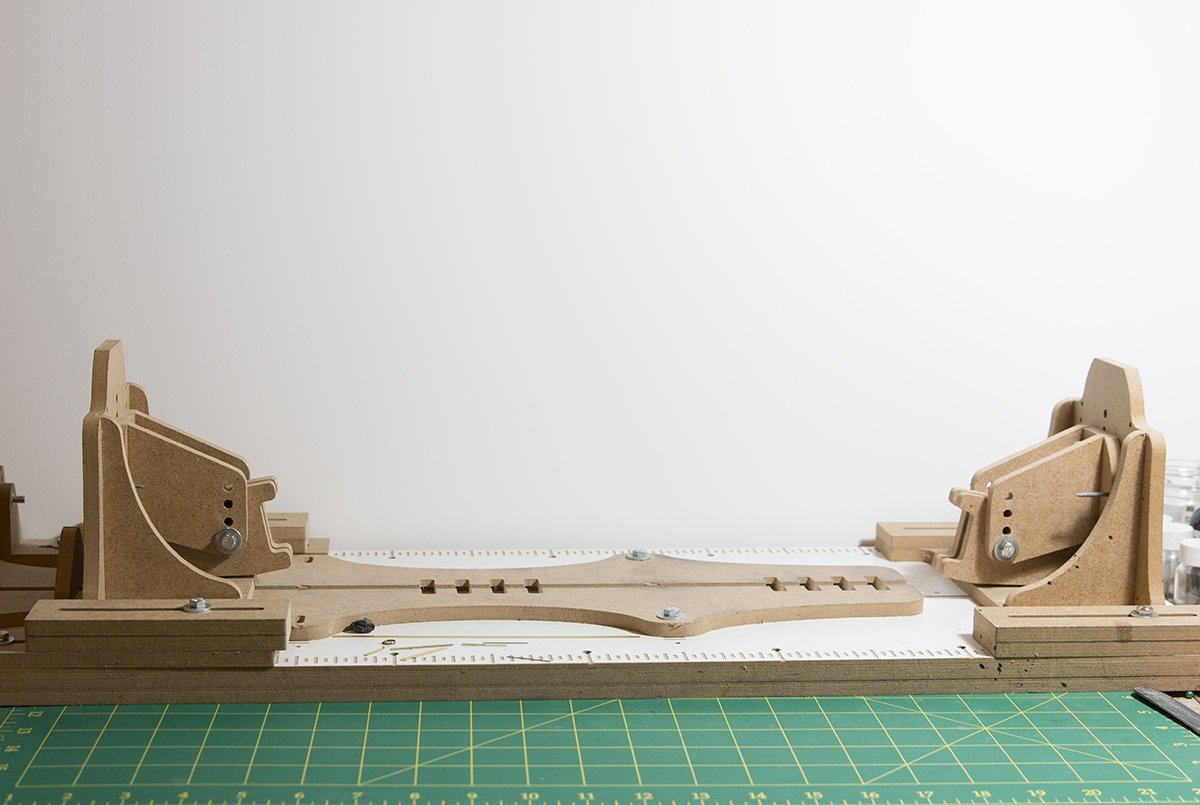
John
- Ryland Craze, mtaylor, MEDDO and 3 others
-
 6
6
-
Glenn,
After my parcel from CMB sat in Heathrow for two weeks it is suddenly in Sydney. So that's three weeks compared to the usual two. So unfortunately you are probably right - you parcel has gone astray, Bad luck. No wonder Chuck is not keen to post abroad at the moment.
John
-
Thanks Chuck, that's pretty clear now. Actually the last photo in Chapter Nine shows it quite clearly. I didn't look far enough forward!
John
- JpR62, mtaylor and EricWilliamMarshall
-
 3
3
-
Chuck,
Here's a pic. I see two eye bolts between the deadeyes and two on the cap rail there is a scupper port also but there is also something marked on the wale between the straps.
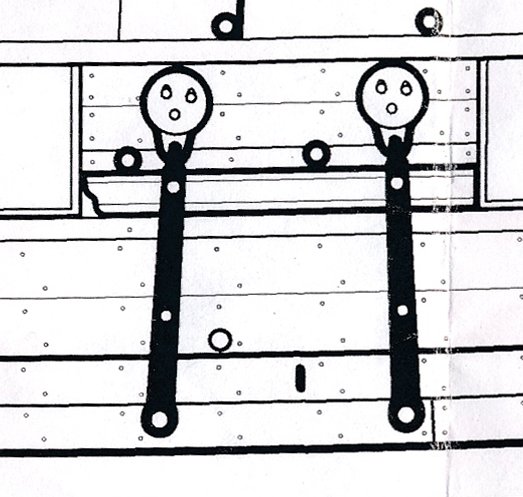
-
Chuck,
On the side view of the plans there is something marked on the wale between the firs two deadeyes and also between the second two. Is this am eye bolt?? Of course it is not shown on the plan view because it is under the chain plate so I can't work it out.
John
-
Glenn,
I placed an order with Cornwall Model Boats recently and paid the second level of shipping costs. This gave me a tracking number. CMB said they shipped it on 7 th May but the royal mail did not pick it up until 13th. It has been at HWDC ( Heathrow Worldwide Distribution Centre) since 14th May. So things are certainly moving slowly so maybe there is hope for your parcel still.
John
-
Post 25 : Deck Planking.
The deck planking is now complete. The scaphs were a bit of a challenging but interesting to do. I first made paper patterns by the age old technique of rubbing over with graphite like this:
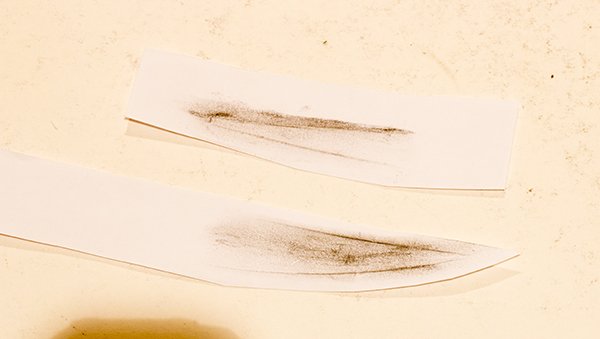
Here is the completed decking:
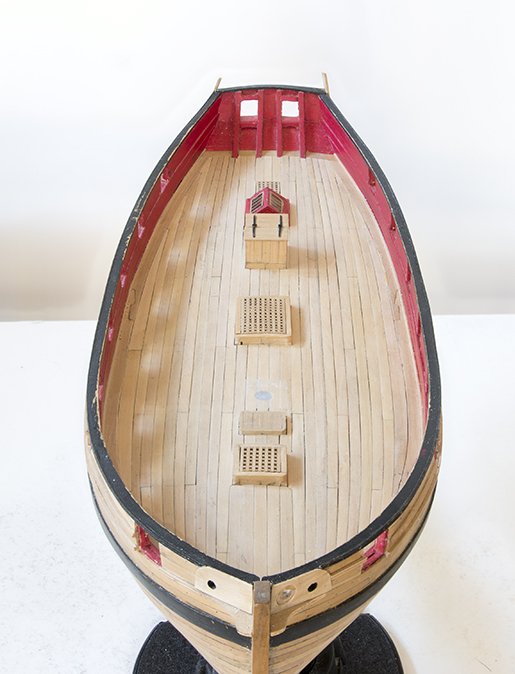
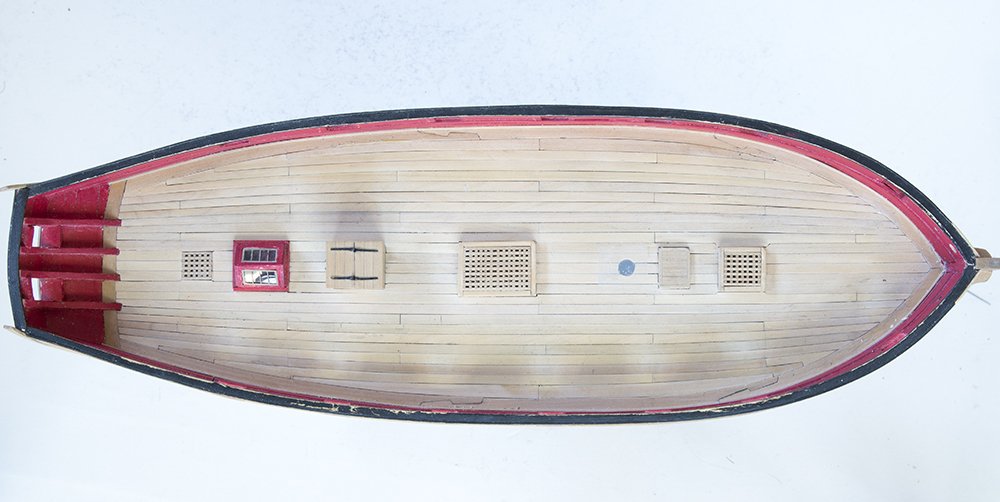
Chuck:
Your deck looks very flat. Did you scrape it after it was laid?
- Gregory, mtaylor, GrandpaPhil and 9 others
-
 12
12
-
OK bruce d, I understand now. I thought you were worried about safety but you are absolutely correct about the effect of silicone on surfaces to be painted or varnished. That is one of its purposees of course - to repel things, particularly moisture. So I am like you I avoid it for the reasons you state not because it is hazardous.
John
-
bruce d wrote: "Silicon is banned in my work area, old bad experience. I would be interested to know if it is in the product."
Bruce we need to distinguish here between- silicon, silica and silicone. Silicon is a chemical element which we don't see much commercially although it is used in the production of transistors. Silica is another matter. This a compound of silicon and oxygen. It is a mineral and is the main component of sand but it can be produced as a fine powder and is also present in bricks tiles etc, It is certainly dangerous as is any fine powder. Silicone is a polymer made from a substance called siloxane which is related to silica but is a liquid not a powder. Silicone should not contain any silica and no free silicon. It is inert and stable and should be safe in this application. It has of course been used in breast implants and in this application there is certainly a problem. Silica and silicones are both based on the element silicon but not in its free form.
-
Post 24: First Belt of deck Planking
The first six planks either side of the central five are now laid. Reasonably straight forward once the once the deck is lined out properly. Now comes the more difficult part of cutting the hooked scarphs while at the same time maintaining the correct taper. It will be a challenge. But that is the fun part of the hobby,
John
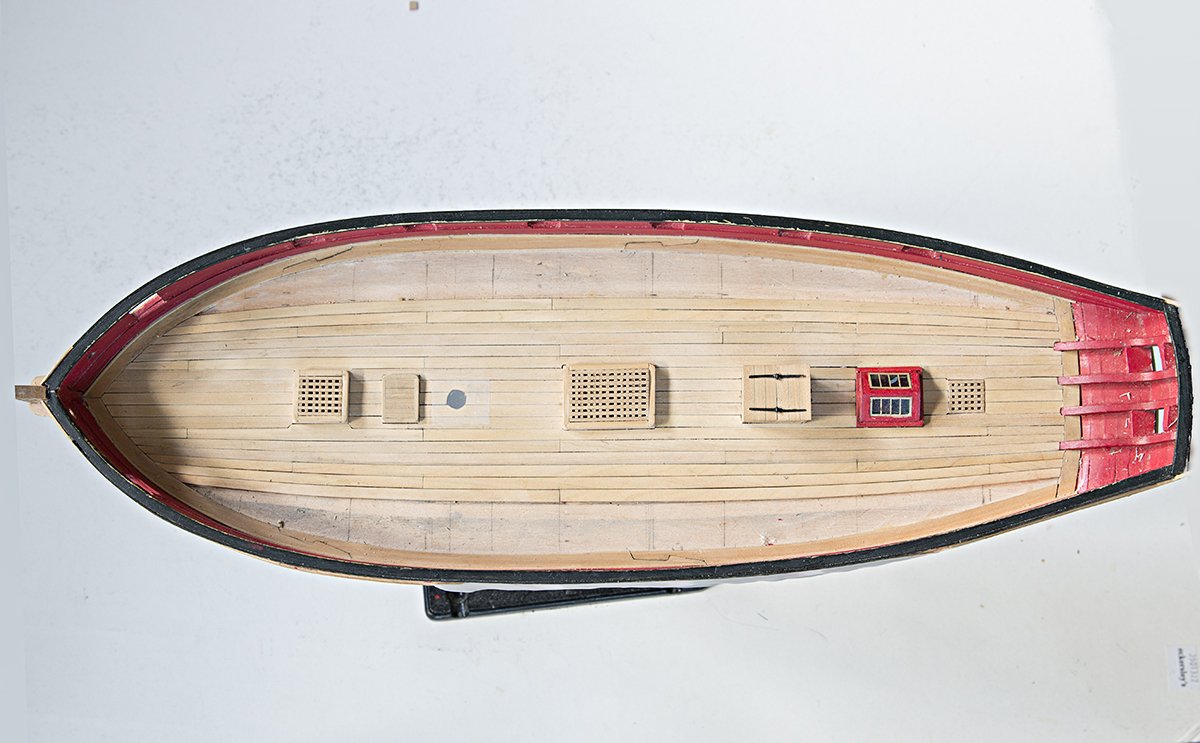
-
OK Glenn,
First of al I have to say that mine are not as good as some others on this site. Probably everybody is going to find their own way to do this. First, I suggest you practice on some scrap. I didn't do this but I should have as I started to run out of timber! Chuck outlines the pattern in his log so I first drew up what looked like a symmetrical scarph on card and then scribed that on the timber. Then I cut outside the lines with an Exacto blade and then filed up to the line with a needle file. It is important that each of the long sides is really flat. If it is even slightly curved you will never match that curve when you cut. the matching scarph. So for the matching one I put the first plank (with its scarph cut) on top of the next plank and scribed its pattern on that plank. Then cut the next scarph in the same way. As I say this is only one way. You have to really find a way which works for you. I think the main thing is to use the same method for each scaph otherwise they are unlikely to match.
I hope this helps.
Incidentally, years ago a watched a guy who built wooden fishing trawlers do this. He left a gap in the center. Then he drove wedges into that gap to tighten the scarph. No glue!!
John
- mtaylor, Ryland Craze, BobG and 3 others
-
 6
6
-
Post 23 : Central Planking
I have now completed the installation of the Deck furniture and the central planking.
I made sure that the various units matched the deck camber by attaching a piece of sandpaper to the deck and moving the item back and forth:
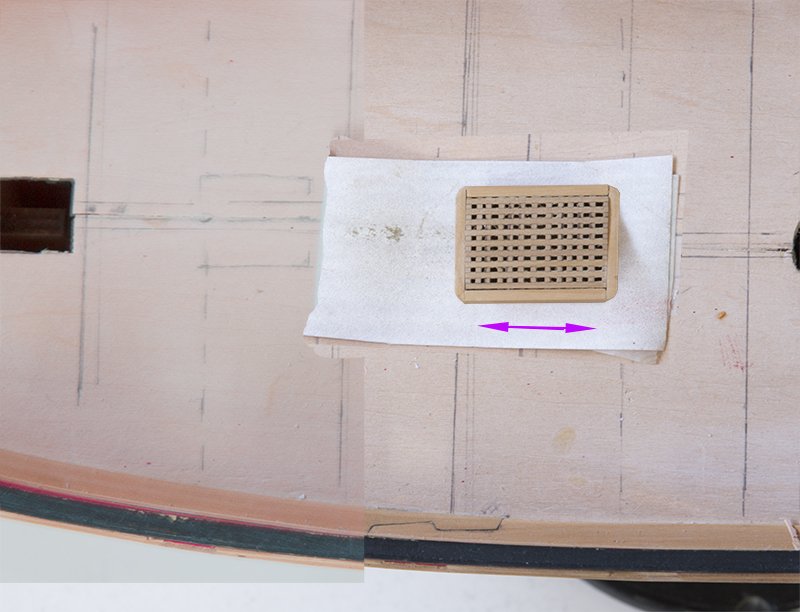
I made sure that he items were correctly placed by using a jig made from thick card:
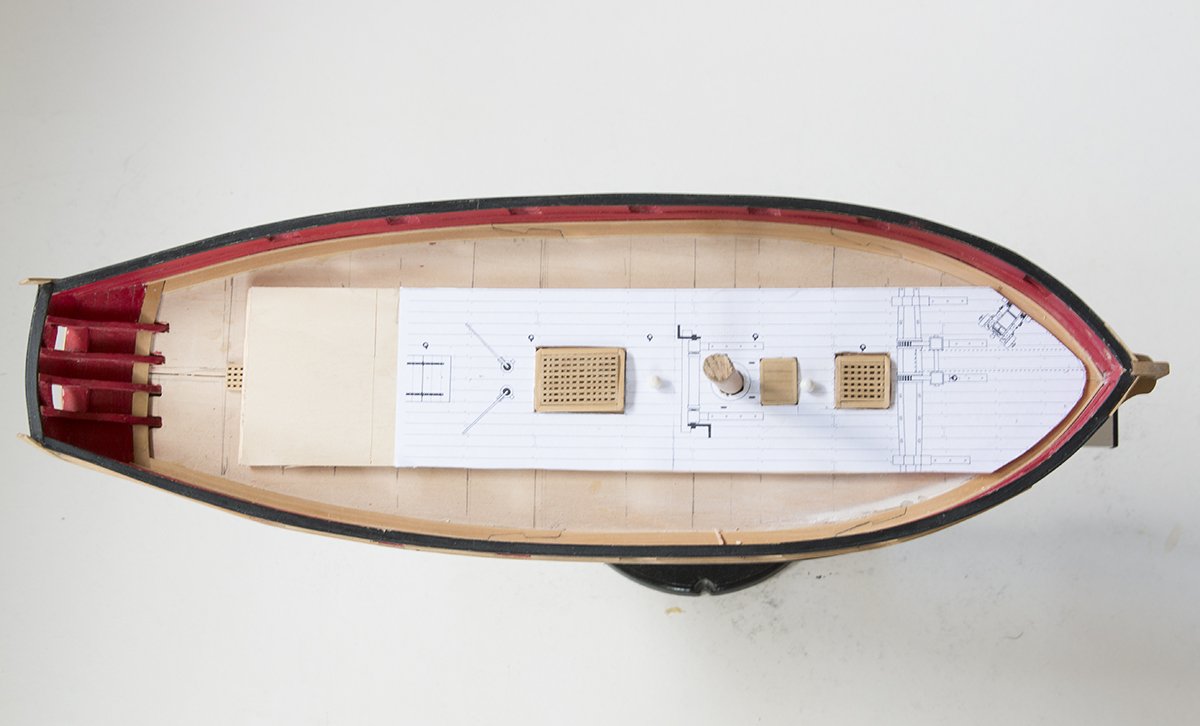
The planking around these items took some time but seems to be OK now:
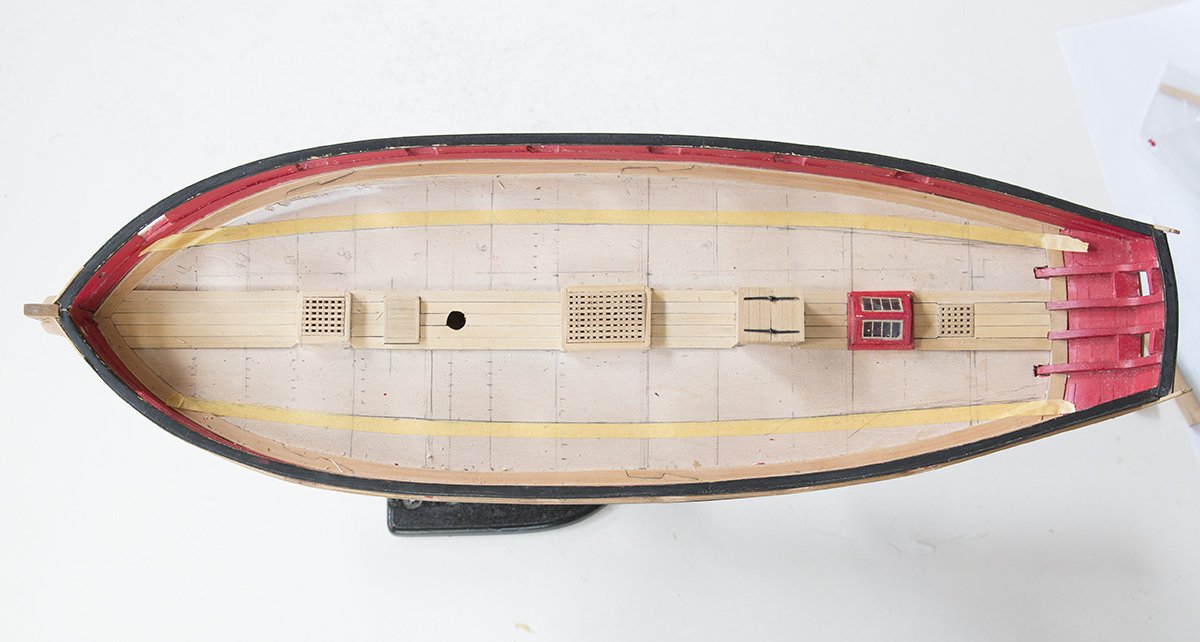
-
Chuck,
Another question if I may. Looking ahead, I notice that the plan for the forward hatch has 7X7 but in your log looks like 8X8. This makes it fit close to five planks but I guess if I have mine 7 X 7 then I just need to use a wider plank after the first five to allow for the notch. There seems to be a butt join just after that hatch so it shouldn't be too bad. It looks like I am going to need to use wider planks for the hooked scarphs as well. Is this correct? I have plenty of 3/16 now but not much wider stuff so I mustn't wast it if I don't need to.
John
-
Chuck,
Thank you for your kind words. I am preparing for deck planking now. Does this curve look about right.
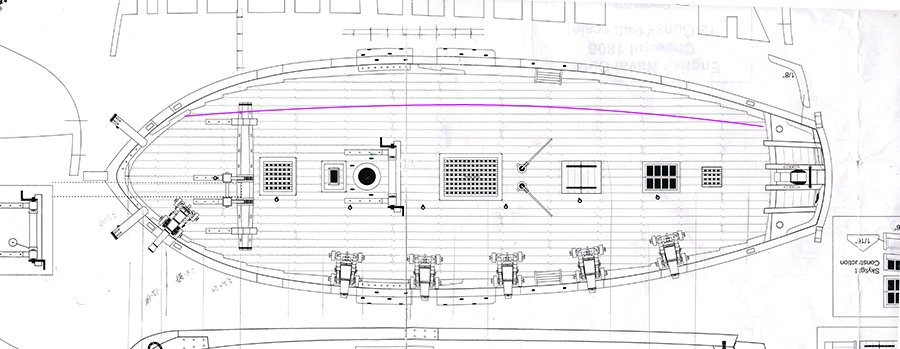
I have not done curved planking before and am looking forward to it.
John
- JpR62, druxey, EricWilliamMarshall and 2 others
-
 5
5
-
Post 22: Margin Planks
I have been away from the workshop for a bit but the caprails and margin planks are now complete. The margin planks were difficult until I established a technique for fabricating these. several attempts ended up in the bin. They are not in Chuck's league but are as good as I could get them.
-
-
1 hour ago, ASAT said:
John, that “pointed plank” is a half showing plank on the first layer of planking and the second, pinkish, pear layer is the second layer of planking so I doubt he has a pointed plank. Pretty sure all the planks have been pre spiled and come that way as part of the kit. His problem must have been he cut the second layer planks too short and didn’t take them all the way to the stem “rabbet”?
OK, ASAT, I see what's happening now. I hadn't read the thread properly to see it was double planked. So if he cuts longer planks it should look OK. The only issue that toward the keel there will be a big difference between the first and second planking. so it looks like this need replacing as well unless he were to fill the disrepancny in some way. Kalakukko, we have all made mistakes some are more easily corrected than others.
John
-
When you redo this you could adjust a couple of other things apart from the length of the planks. I notice that you also have a "pointed" plank. This would never be done in practice s it would be a source of leakage. Planks should never be tapered to more than half of their full width. This is caused largely because your last six planks could be tapered a bit more but also because your garboard finishes a bit too far forward. If you finish it a bit further aft that will avoid crowding of the next four planks. The ones after that look OK ( except of course they need to be extended into the rabbet). You could probably finis the garboard not far forward of that join between the stem and the keel.
John
-
Here is an example. My shop can produce a variety of effects. for example the negative of this (brass writing on a black background)
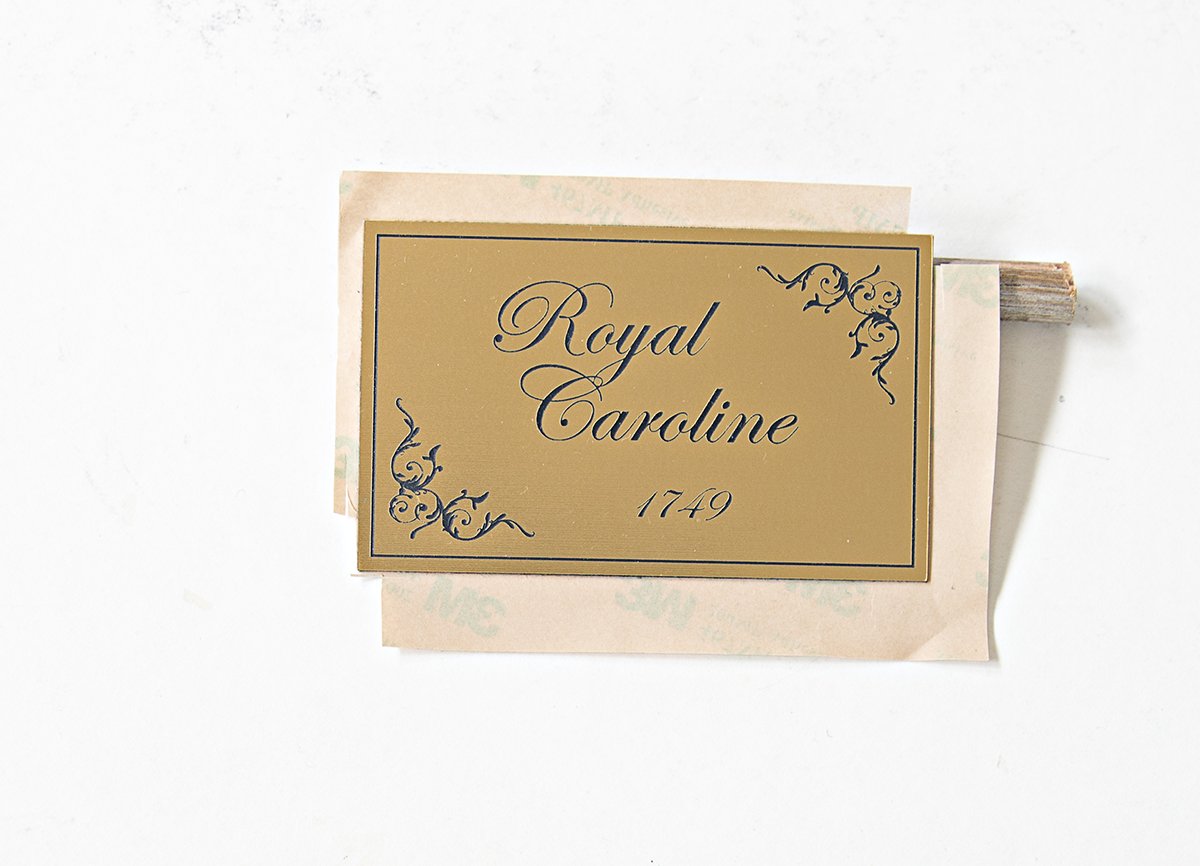
John
- thibaultron and mtaylor
-
 2
2
-
Yes, Reklein, this is exactly what I do. I draw up the plaque in Illustrator, save it as an eps file and the sports trophy shop etches it on a brass plate for about A$20.
John
- mtaylor and thibaultron
-
 2
2
-
On 2/6/2020 at 4:20 PM, timjina said:
I think a lot of builders are making it hard for yourself. I always stay well clear of oil and spirit based paints and never us finishing oils like Tung oil etc on my work............There are so many lovely acrylic paints on the market ( just remember it's a model and not a real ship) in saying that, you will obtain a more realistic finish with acrylics and they will be a lot more forgiving for you. To obtain a color as close to the real thing as possible, all I do is go to the local hardware or paint shop and look at the 1000's of color swatches they have. When I have selected the right swatch ,I buy a sample pot. Some stores will mix in flat or semigloss .I also have on the shelf a clear acrylic varnish although I hardly ever use it. All I pay is around $ 5.00 for 300ml and that will last many models.. I hope this is of some help. Acrylics are all I use and have never been disappointed. The drying time is fast as well, enabling a fine sand after about an hour if needed. All the best to you and happy modelling...We have an amazing hobby, take care.....Jim
I used to buy these sample pots as well but eventually I found that the coarse pigments in house paint resulted in a "grainy finish". I now bite the bullet and pay the money for model paints such as Valejo and I believe the finish is superior.
John
-
There seems to be a bit of confusion here with the chemistry. It is a bit pedantic but I think it helps in trying to classify these products.
PVA stands for poly vinyl acetate (not acrylate) Titebond, Elmers and book binders glue are all PVA's but the exact formulation gives rise to different or pH's or acidity. The significant thing about Bookbinders glue and some other "craft" glues is that they are neutral (pH 7). CA is cyano acrylate. This is a very different animal as we know from its properties. Note it is not a polymer in the bottle but polymerizes on contact with moisture. Many acrylates are lachrymatory ((they make us cry) However, Perspex and the polymer in water based paints are also acrylates but they have a different chemical structure and are less harmful, largely because they are already polymerized and so are relatively stable although hey do degrade with time. CA is what we call a monomer ie it is a small molecule and so has some rather dangerous properties. Once it has polymerized or "set" it is much less harmful.
Hope this iis not too confusing,
John

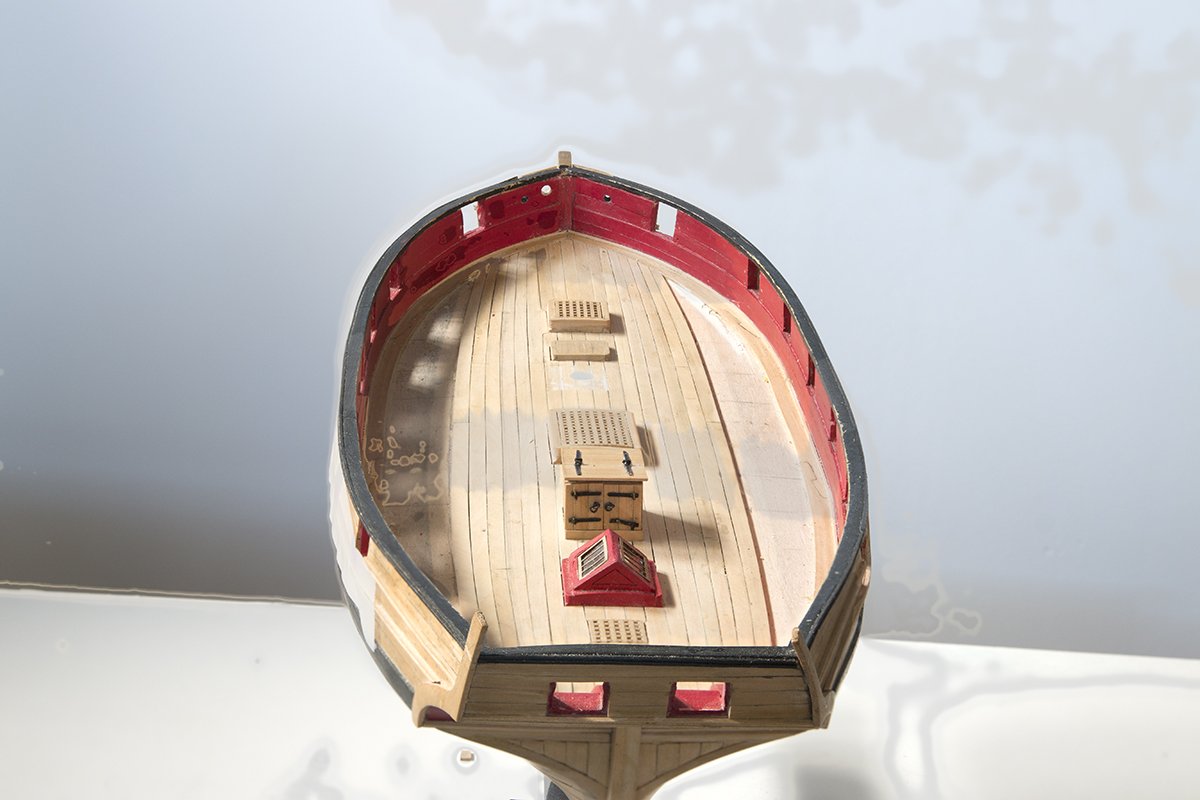
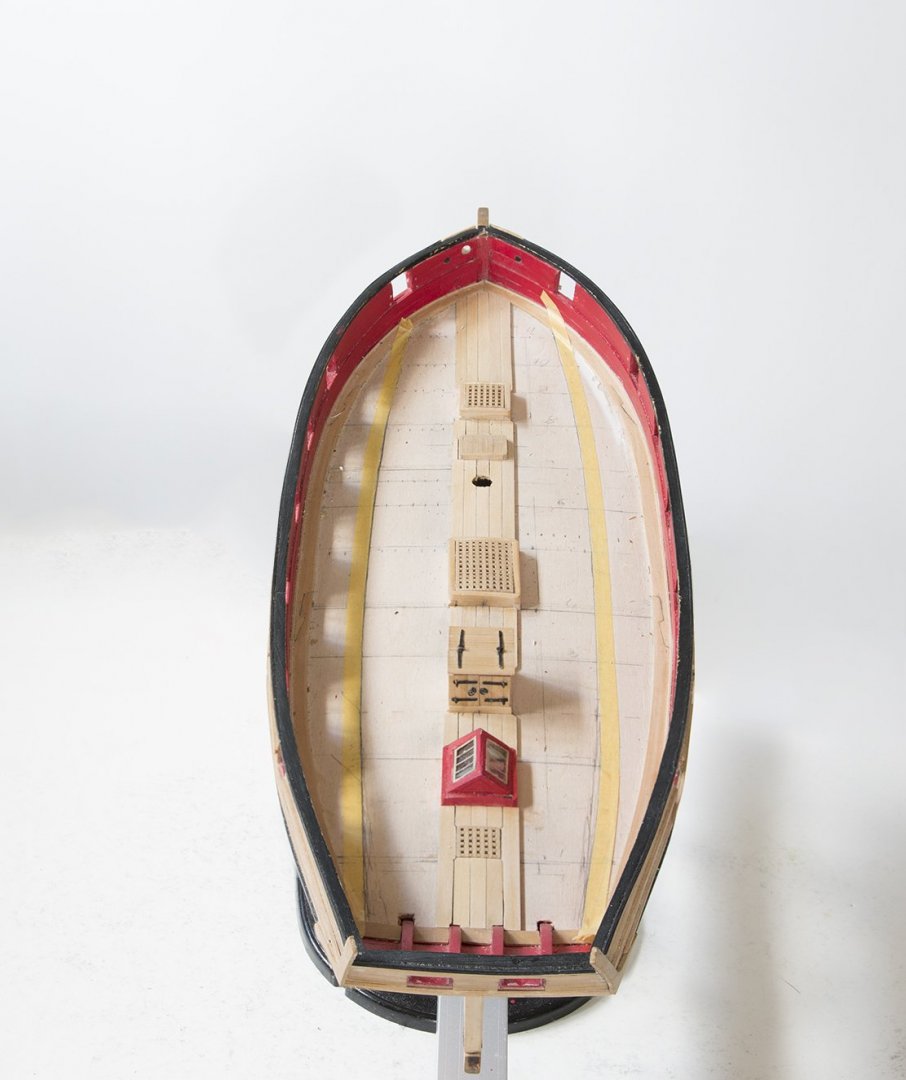
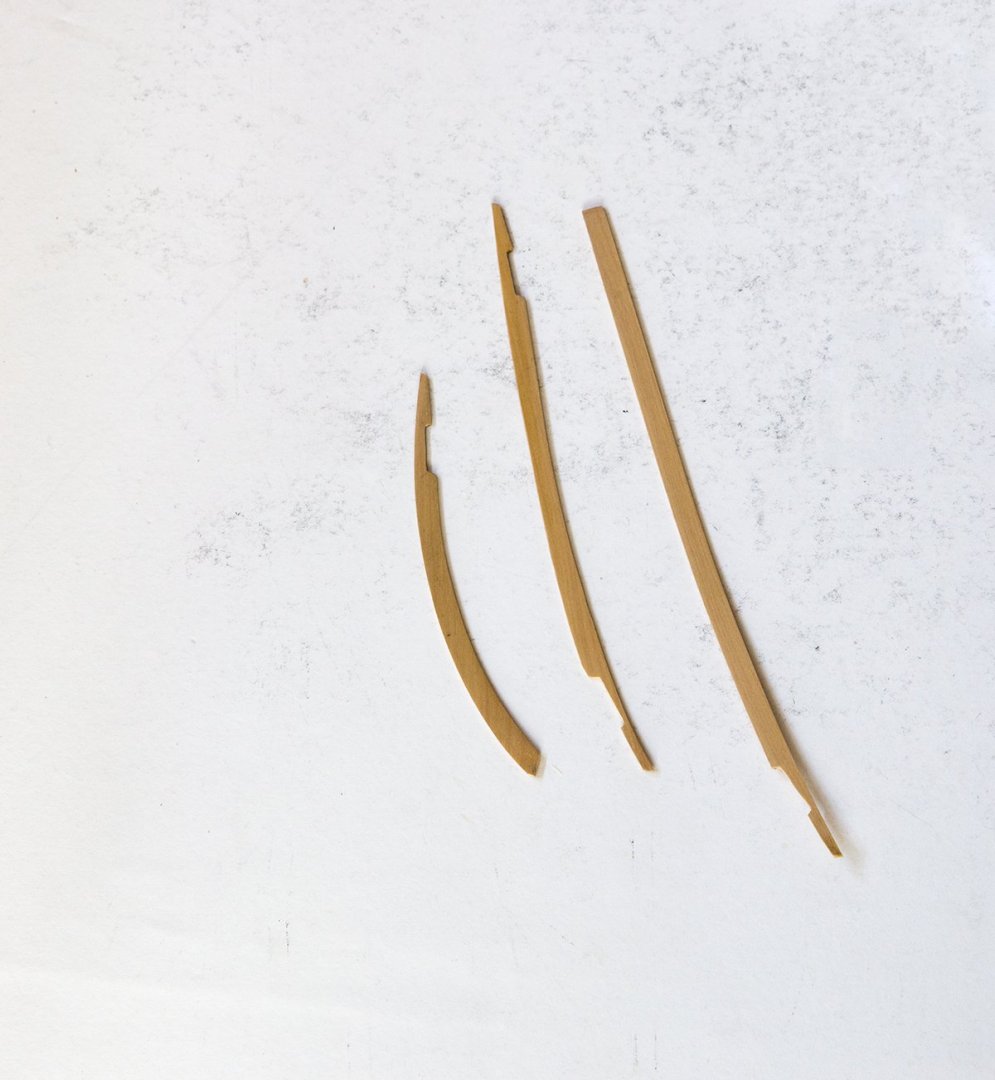
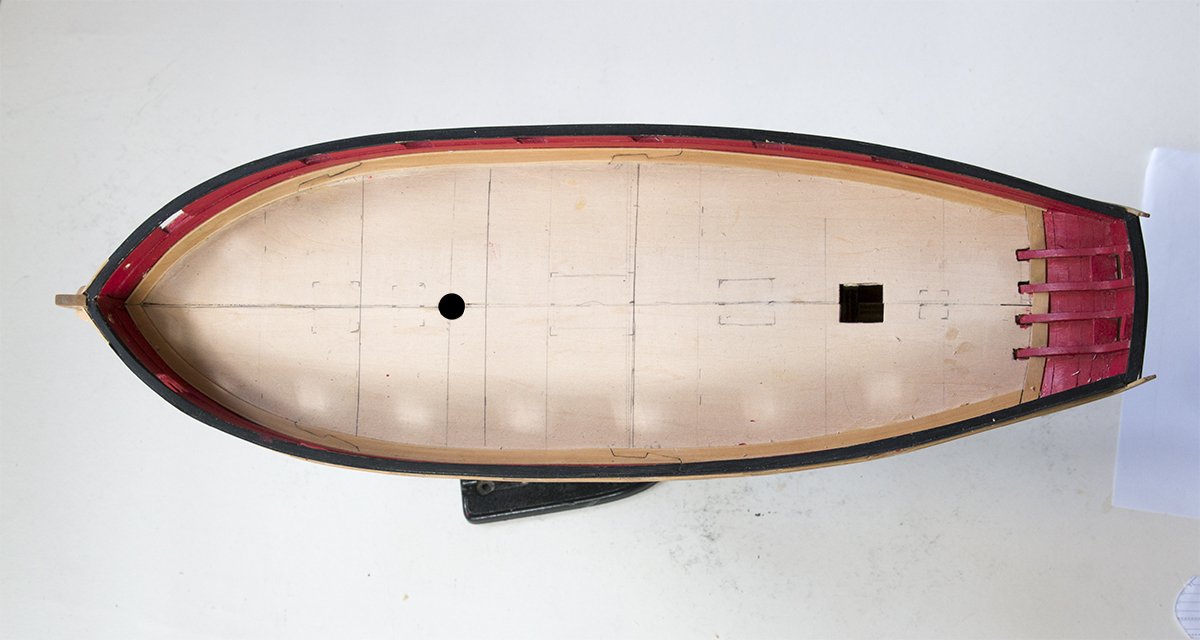
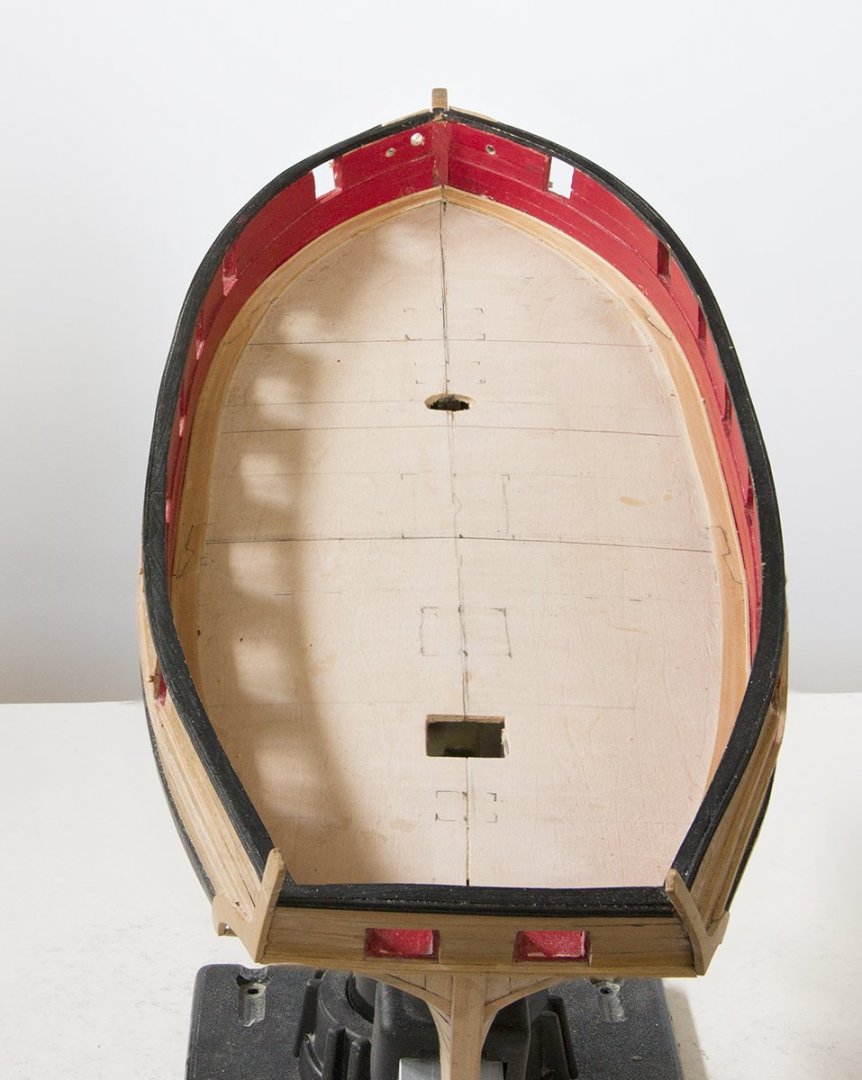
HM Cutter Cheerful 1806 by bartley - FINISHED - 1/48 scale
in - Build logs for subjects built 1801 - 1850
Posted
Post 27: Boom Crutches
I found these tricky. The procedure for constructing them is well described in Chuck's post so as I tried to follow this I don't see a point in repeating his excellent description. Nevertheless, several attempts ended up in the bin before I obtained something reasonable and even now they are far from perfectly matched. Fortunately the black paint hides a multitude of sins!
John